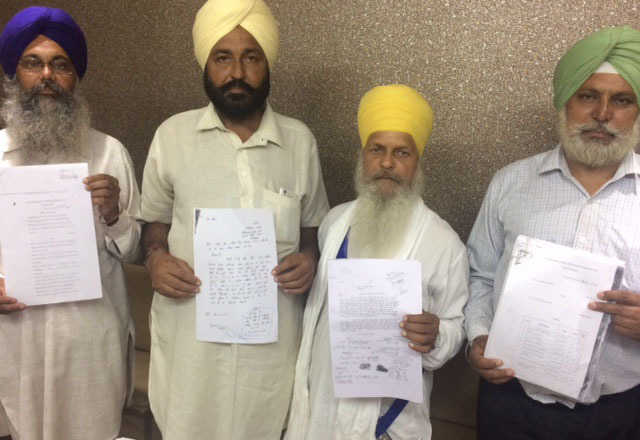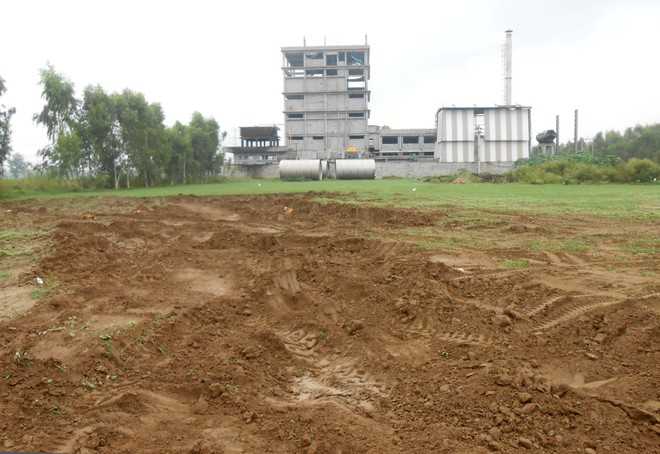Rina Chandran | Thomas Reuters Foundation | 10 October, 2017 |Hastinapur, Rajasthan
It took residents of Hastinapur village in the Indian state of Rajasthan three years of poring over maps, demarcating boundaries, and numerous petitions and visits to local officials to regain control of their traditional common land.
But the wait - and the effort - were worth it, they say.
The 35 hectares (87 acres) of land now registered to the community have changed the lives of the 50 families because they are now able to safely graze their cattle, meet most of their need of fodder and firewood, and supplement their incomes.
The lush green grounds teeming with native trees and scrub were once arid, encroached by a neighbouring village. They are testament to the success the state has had with restoring the commons even as industrial demand for land rises.
“Before we got back the land, the women had to walk some distance to graze the cattle, cut firewood, and we had to buy additional fodder,” Gopal Jat, a village elder, said as he sat in the shade of a leafy jamun tree.
“Now we can graze our cattle without worries, the women and children need not go anywhere else for fodder or firewood, and we earn some money from selling produce. It took time, but this is our land now, no one can take it from us,” he said.
Commons make up more than a third of India’s total land area. They include grazing grounds, some forest land, ponds, rivers and other areas that all members of a rural community can access and use.
They provide food, water, fodder, firewood and livelihoods to rural communities, particularly the poor, while also helping recharge groundwater and maintain the land’s ecological balance.
As the population grew and demand for land rose, commons were taken over for industrial and development projects, including roads, mines, power plants and homes.
“Access to the commons and its resources has long been a customary right of rural communities,” said Shantanu Sinha Roy, a manager at advocacy Foundation for Ecological Security (FES) which helped Hastinapur regain control of its commons.
“But that right has been increasingly denied. When communities regain control, their livelihoods improve, and the land regains its original character, with the soil and water conserved,” he told the Thomson Reuters Foundation.
INSECURE RIGHTS
The majority of land conflicts in India are related to common land, according to a study by the Tata Institute of Social Sciences.
Common land in India has deteriorated by about half over the last five decades because of encroachments, insecure tenure rights for local communities and a lack of trust in communities in managing them, according to data from FES.
Many were classified as “wastelands” or government land and diverted for quarrying, biofuel cultivation, mines and other commercial purposes, displacing and depriving local communities.
About half the country’s rural households rely on forests and common land for their livelihood activities, and the loss of commons has hurt farmers, weavers and potters, and triggered migration to the cities for jobs.
The 2006 Forest Rights Act and an older law to protect land of indigenous people recognised their and forest dwellers customary rights to forest land and commons.
Environmentalists - and even musicians - are appealing for the protection of common land to safeguard livelihoods and protect against climate-change impacts.
But states can deny these rights, or change the classification of commons and take them over, particularly in resource-rich areas it deems critical for development.
“States do not distinguish between common land and other lands, and rarely respect customary usage or communities’ claims over common lands,” said Shankar Gopalakrishnan at rights group Campaign for Survival and Dignity.
“When these lands are taken, the effects include pollution, damage to the water table and changes in the ecosystem that result in loss of livelihoods with no compensation,” he said.
“SPECIAL” CONDITIONS
The Supreme Court in 2011 recognised the importance of commons to rural economies, and ordered states to remove encroachments and hand over management to village councils.
Rajasthan, where commons make up 40 percent of total land area, was the first state to draft a policy for commons.
The western Indian state called for the demarcation of commons, management by the community, engaging the help of research firms and non-profits, ensuring sustainability, and ending privatisation except in “very special and exceptional” conditions.
As of 2015, about 340,000 acres of commons were managed by 1.5 million people in Rajasthan, according to FES, which is using satellite imagery to map the commons in three states.
In villages that have regained their commons, distress migration has been stemmed, water tables have risen and no new mining projects have been announced, Roy said. .
But progress elsewhere has been limited.
“The Supreme Court judgment didn’t significantly change the situation on the ground, as states shifted the onus for implementation to communities and non profits,” said Kanchi Kohli at think tank Centre for Policy Research in Delhi.
“Commons are less of a concern for the state than other land-related issues. Within communities too, management can be complicated by caste politics and social hierarchy,” she said.
In Hastinapur and in Barundani, about 35 km (22 miles) away though, the families all come together not just to use the commons, but also to care for them and guard the land from encroachers, said Roy.
The fight for the commons has also empowered women in one of the most traditional parts of the country where women cover their heads, and normally do not speak in front of men.
“When access to water and firewood was limited, women bore the brunt of it. They were also not consulted on matters in the village,” said Roy.
“Now, they sit in on meetings, they are part of the decision making on the commons and other matters. The economic value of the commons is important, but there are also social and ecological aspects that are equally important,” he said.
(Reporting by Rina Chandran @rinachandran, Editing by Astrid Zweynert. Please credit the Thomson Reuters Foundation, the charitable arm of Thomson Reuters, that covers humanitarian news, women’s rights, trafficking, property rights, climate change and resilience. Visit news.trust.org to see more stories.)






